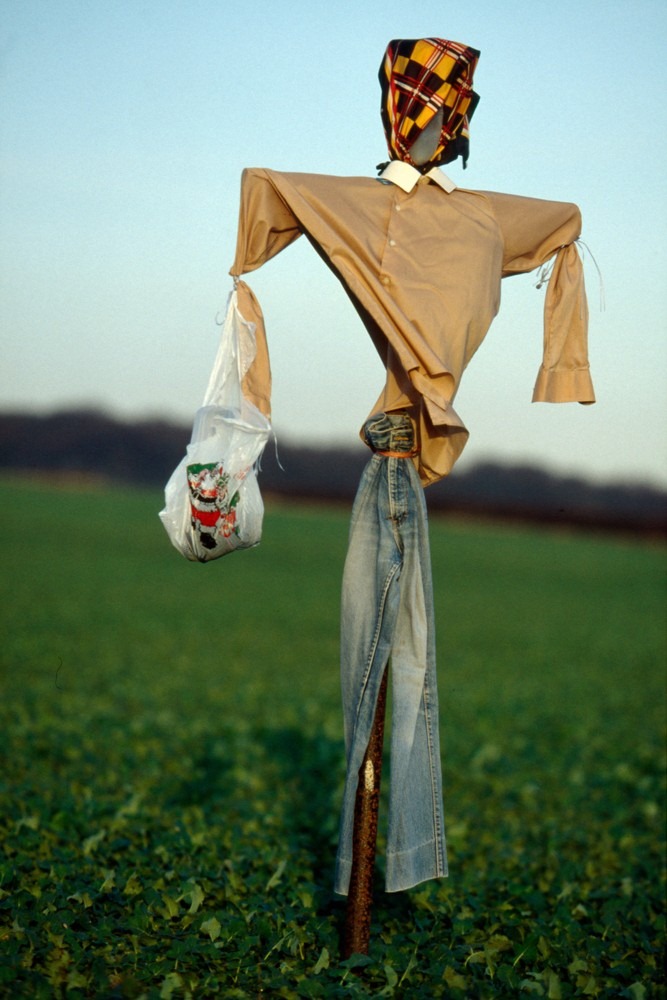One of the most familiar figures of the rural landscape throughout the United Kingdom, as with many countries around the world, is the scarecrow. These hideously disfigured silent sentinels of the countryside are supposed to scare away pests such as birds, but as British photographer Colin Garratt found out, they are terrifying enough to scare away humans.
“When among scarecrows, one gets an uneasy feeling of being watched,” says Colin Garratt. “Some are so realistic and menacing that they appear to be alive.”
“They are not from the anaesthetised world of the craft fair but are the direct descendants of the ancient spectres which have haunted the landscape for centuries”. he adds.
While scarecrows has been in use for centuries, their origin and development are obscured in mystery. Historians believe that during the Middle Ages, scarecrows in Britain were actually young boys tasked with scarring away birds from crops. But when the Great Plague of 1348 wiped half the population in Britain, landowners couldn’t find enough young boys to employ as bird scarers. So they stuffed sacks with straw, carved faces in turnips or gourds, and made scarecrows that stood against poles.
“Scarecrows have changed little over the centuries, although certainly they are better dressed today” says Colin Garratt. In earlier times, vagrants and tramps would strip them of any clothes worth wearing.
“The variety of scarecrows is infinite and all have their character,” observes Colin Garratt. “Some stand stiff, others are a ripple of movement. Some are rooted into the ground like trees, while others stride across the fields waving flags. One significant aspect of the evolution of scarecrows is the use of plastic containers, along with other modern materials such as masks and boiler suits. Some of those who create scarecrows believe that a face with an expression is an important factor in deterring predators; others are content with more abstract forms”.
“At the beginning of the year, scarecrows preside over early sowings of rape and wheat. In battering winter gales, driving rain and sleet, many scarecrows get blown into weird positions like drunks; or collapse. The ripening crops eloquently signify that the scarecrow’s work is done. Few remain to see their task fulfilled because if they become entangled in the harvesting machinery it causes serious damage”, says Colin Garratt.
Sometimes passers-by would attack a scarecrow, stabbing and mutilating it. Others have found them to be perfect hiding places for dead bodies, or stolen loot which they stash in the pockets of their greatcoats. Good looking scarecrows often get stolen.
“It is always a great thrill to approach a new scarecrow,” said Colin Garratt. “Will it have a face? Will it be sinister, happy, sad, aggressive, fiendish, stupid or just a friendly fool?”
The Scarecrow Exhibition of Garratt’s photographs of this universal symbol, is currently at display at Geddes Gallery, in London, from March 25 through March 30.

via The Guardian

























Comments
Post a Comment